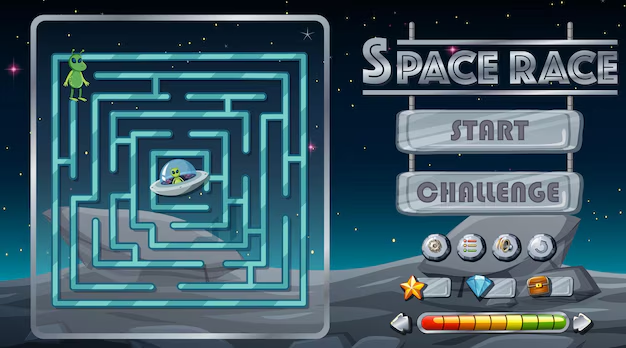The battle between good and evil is as old as time itself, a narrative that has been passed down through generations. The “Great Game” of heroes and villains, however, transcends mere storytelling; it is a fundamental part of the human experience. Whether in literature, cinema, or real-life political arenas, the conflict between the forces of good and evil creates drama, tension, and a powerful moral framework for societies. The fascinating dynamic between heroes and villains is not just about contrasting forces but also about the blurred lines in between, where sometimes it’s hard to tell who is the hero and who is the villain.
The Evolution of Heroes and Villains
Historically, heroes and villains have served as symbols of moral clarity and cultural ideals. In classical mythology, heroes like Hercules or Achilles fought for the greater good, facing formidable villains or monsters, embodying virtues such as strength, courage, and wisdom. On the other hand, villains like Hades or Medusa represented chaos, corruption, or vengeance. These characters were designed to highlight what was “good” in society and warn of the consequences of deviating from the moral path.
However, in modern times, the perception of heroes and villains has become much more complex. Heroes are no longer infallible paragons of virtue, and villains no longer represent pure evil. The rise of antiheroes—characters who possess qualities of both hero and villain—has made it evident that the Great Game is not always black and white.
Heroes: The Guardians of Morality
Heroes are often seen as individuals who champion justice, protect the vulnerable, and fight for noble causes. In literature, these figures symbolize virtue, resilience, and the pursuit of righteousness. Consider iconic heroes like Superman, who symbolizes hope, or Harry Potter, who fights for the defeat of evil with bravery and friendship.
However, heroes are also deeply flawed. Batman, for instance, operates in the grey areas of law and order. He is driven by vengeance but still strives for justice. This complexity makes him more relatable and humanizes his character. Heroes are often born from tragedy, and their pursuit of good is as much about redemption as it is about the fight against evil.
In the real world, we look to political leaders, activists, or revolutionaries who inspire people to act in the name of justice and change. These figures may come with their flaws but are often celebrated for their drive to stand up for the powerless.
Villains: The Embodiment of Chaos
Villains, on the other hand, represent the opposing force—the embodiment of chaos, selfishness, and destruction. Classic villains like Darth Vader or The Joker are not just evil for the sake of being evil; they are driven by deep personal pain, trauma, or a twisted sense of justice. These villains challenge societal norms and show how easily moral boundaries can be blurred.
In many cases, villains believe they are the heroes of their own stories. The Joker, for example, sees himself as a force of chaos that will expose the hypocrisy and fragility of society. Thanos, in the Marvel Universe, believed that his genocidal actions were justified by a distorted view of population control. This inversion of the hero-villain relationship challenges audiences to reconsider the nature of good and evil, and whether the line between the two is as clear as it seems.
The Complex Relationship Between Heroes and Villains
The relationship between heroes and villains is often one of reflection. Villains challenge heroes, forcing them to confront their own limits, fears, and biases. At the same time, villains are often defined by the very existence of heroes. Without a hero, there is no villain. This interdependence leads to a dynamic where the two are inextricably linked.
A villain may only rise to power because of the hero’s weakness, while the hero’s greatest strength often comes from the villain’s challenges. Think about the eternal conflict between Sherlock Holmes and his arch-nemesis, Professor Moriarty. Moriarty’s brilliance and ambition push Holmes to his intellectual limits, and their rivalry underscores the depth of both characters.
The Changing Faces of Heroes and Villains in Modern Media
In today’s world, the lines between hero and villain continue to blur. In television series like Breaking Bad and Game of Thrones, characters like Walter White and Jaime Lannister are presented as morally gray individuals. Walter White begins as a humble teacher but descends into a ruthless drug kingpin, while Jaime, once seen as a villain, is given more depth, eventually seeking redemption.
This shift reflects a broader societal change. In an age where political, social, and economic systems seem deeply flawed, we begin to question the traditional binary of good versus evil. The modern hero is often conflicted, imperfect, and multifaceted. Similarly, villains can have deeply human motivations and, in some cases, even provoke empathy.
FAQs
- What makes a good hero? A good hero typically demonstrates courage, moral integrity, and a willingness to sacrifice for others. However, modern heroes are also complex and often deal with inner struggles and flaws.
- Are villains always evil? Villains are often driven by personal desires, trauma, or distorted perceptions of justice. While they may commit evil acts, their motivations can be multifaceted, making them more relatable or understandable.
- What defines the relationship between heroes and villains? Heroes and villains are often in direct opposition, but their dynamic is symbiotic. Villains push heroes to grow and evolve, while heroes provide a moral framework that challenges the villain’s actions.
- Can a hero become a villain? Yes. Many stories explore the transformation of heroes into villains, especially when their motives become corrupted or they start making decisions that betray their original ideals.
- Do modern villains have redeeming qualities? Many contemporary villains have complex backstories and motivations that make them more sympathetic. This complexity allows them to challenge traditional ideas of right and wrong.
- Why do we love antiheroes? Antiheroes are compelling because they reflect the real-world complexity of human nature. They are imperfect, often flawed, yet still strive for some form of justice or personal growth.
- Can villains be the heroes of their own stories? Absolutely. In many narratives, villains believe their actions are justified, and they may even see themselves as heroic figures, challenging societal norms and fighting for their own version of justice.
Conclusion
The Great Game of heroes and villains is not just about simple moral dichotomies but about the exploration of human nature, values, and choices. Heroes may inspire us, but it is often villains who challenge our perspectives and force us to rethink our notions of good and evil. In a world where shades of grey dominate much of our reality, the interplay between these two forces continues to captivate us.
Key Takeaways
- Heroes and villains are often complex, multifaceted characters that challenge traditional moral boundaries.
- The Great Game is an ongoing exploration of good versus evil, but modern narratives have blurred the lines between the two.
- Heroes inspire hope and justice, while villains provoke reflection on morality, chaos, and personal motivation.
- Understanding the dynamic between heroes and villains offers valuable insights into human nature and societal values.

